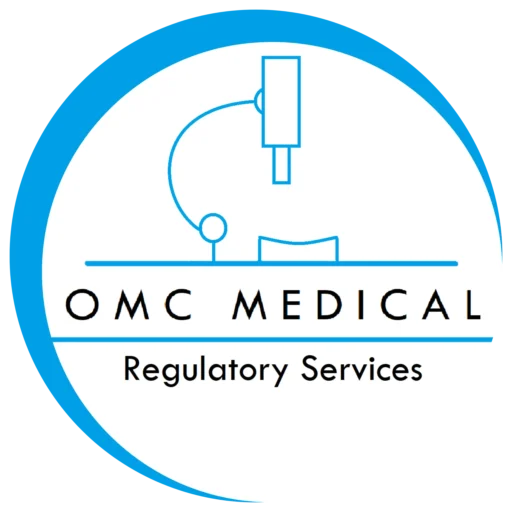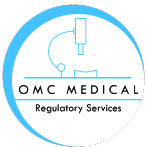Lebanon Drug Product Registration
Lebanon Drug Product Registration
Republic of Lebanon Ministry of Public Health Guidance and Regulations
Regulatory Authority
Republic of Lebanon Ministry of Public Health
Link for Regulatory Authority
Local Authorised
Yes
Classification of Medical Devices
Prescription, Non-prescription
Registration Timeline
6-12 months
Registration Fee
Not Mention
License Validity
5 Years
Biologicals
Guidance and Regulations for Similar Biological Medicinal products (Biosimilars)
Introduction
It’s commendable that Lebanon has chosen to follow international guidelines for the evaluation and regulation of Similar Biological Medicinal Products (SBPs), specifically the “GUIDELINES ON EVALUATION OF SIMILAR BIOTHERAPEUTIC PRODUCTS (SBPs)” issued by the World Health Organization (WHO). Adhering to such guidelines ensures a standardized and rigorous evaluation process for SBPs, contributing to the safety, efficacy, and quality of these products.
The WHO guidelines provide a comprehensive framework for the evaluation of SBPs, covering various aspects of their development, registration, and post-marketing surveillance.
Special Considerations for the Registration of Similar Biological Medicinal Products (Biosimilars)
- a) Interchangeability
- Automatic substitution at the pharmacy level is prohibited.
- Interchangeability decisions should be made solely by healthcare professionals (HCPs).
- Non-medical switch, driven by economic rather than clinical needs, is not allowed.
- Non-medical switch may complicate pharmacovigilance, as it can hinder the attribution of adverse events to the appropriate agent.
- In the case of delayed onset of adverse reactions, physician awareness is crucial for effective monitoring.
- In the decision-making process of interchangeability, treating physicians should always be involved.
- b) Extrapolation of Efficacy and Safety Data to Other Clinical Indications
- If similar efficacy and safety are demonstrated for a specific clinical indication with both the Similar Biotherapeutic Product (SBP) and Reference Biotherapeutic Product (RBP):
- Extrapolation to other indications of the RBP may be possible under certain conditions.
- Conditions for extrapolation include:
- Use of a sensitive clinical test model able to detect potential differences between SBP and RBP.
- Consistency in the mechanism of action and/or involved receptor(s).
- Characterization of safety and immunogenicity of the SBP.
- Absence of unique safety issues for the extrapolated indication(s).
- Convincing arguments for applying findings from non-inferiority trials to extrapolated indications.
- If prerequisites are not met, the manufacturer must submit its own clinical data for the desired indication(s).
- Detailed scientific discussions on the benefit/risk of extrapolation should be provided if intended.
- c) Dosage Form and Strength
- The SBP must have the same dosage form and strength as the RBP.
- d) Naming
- To uphold rigorous pharmacovigilance standards, the following recommendations are in place:
- Biologic drugs, including biosimilars, must be prescribed by their brand name rather than the International Nonproprietary Name (INN).
- Pharmacovigilance reports should include the brand name, INN, and batch number.
- The SBP should be easily identifiable through a unique brand name. If an INN is designated, it should also be mentioned, following the WHO policy on INNs.
- e) Conduct of Clinical Studies in Lebanon
- Clinical studies must be carried out in centers with Good Laboratory Practice (GLP) once guidelines are issued. Centers must have an approved Institutional Review Board (IRB) before Good Clinical Practice (GCP) is operational.
Labelling and Prescribing Information
A biosimilar label would include a statement that the product is a biosimilar to a reference, give the name of the reference product and would provide a brief definition of what it means to be biosimilar in a footnote.
List of Requirements for the registration of Biosimilar products according to CTD format
Module 1: Administrative Information
1.1 Cover letter/application form/proposed summary of product characteristics/labelling and package insert leaflet.
1.2 Trade name
1.3 Generic name
1.4 Expiry date
1.5 Other trade names of the similar product
1.6 Pharmaceutical form
1.7 Name of manufacturing company
1.8 Name of active substance manufacturer (if different from above)
1.9 Agent in Lebanon
Name and Address
1.10 Marketing status at country of origin and other countries
1.11 Reference medicinal product (RMP) – The innovator Name, Approval at EMA/FDA
1.12: Labelling product information
Module 2: Common technical document summaries
2.1. Table of contents of Modules 2 – 5.
2.2. Introduction.
2.3. Quality overall summary.
2.4. Pre-clinical overview:
2.5. Clinical overview.
2.6. Pre-clinical summary.
2.6.1. Pharmacology written summary.
2.6.2. Pharmacology tabulated summary.
2.6.3. Pharmacokinetics written summary.
2.6.4. Pharmacokinetics tabulated summary.
2.6.5. Toxicology written summary.
2.6.6. Toxicology tabulated summary.
2.7. Clinical summary
2.7.1. Summary of biopharmaceutical studies and associated analytical methods.
2.7.2. Summary of clinical pharmacology studies.
2.7.3. Summary of clinical efficacy.
2.7.4. Summary of clinical safety.
2.7.5. Literature references.
2.7.6 Synopses of individual studies.
Module 3: Quality
3.2.S. Active substance(s).
3.2.S.1. General information
3.2.S.1.2. Structure
3.2.S.1.3. General properties
3.2.S.2. Manufacture of active substance(-s):
3.2.S.2.1. Manufacturer(s).
3.2.S.2.2. Description of manufacturing process and process controls.
S.2.S.2.3. Control of materials
3.2.S.2.4. Controls of critical steps and intermediates.
3.2.S.2.4.1 Critical steps
3.2.S.2.4.2 Intermediates
3.2.S.2.5. Process validation and/or evaluation.
3.2.S.2.6. Manufacturing process development.
3.2.S.3. Characterization of active substance(-s).
3.2.S.3.1. Elucidation of structure and other characteristics.
3.2.S.3.2. Impurities.
3.2.S.4. Control of active substance(s).
3.2.S.4.1. Specification.
3.2.S.4.2. Analytical procedures.
3.2.S.4.3. Validation of analytical procedures.
3.2.S.4.4. Batch analyses
3.2.S.4.5. Justification of specification.
3.2.S.5. Reference standards or materials.
3.2.S.6. Container/closure system.
3.2.S.7. Stability
3.2.S.7.1. Stability summary and conclusions.
3.2. S.7.2. Post-approval stability protocol and stability commitment.
3.2. S.7.3. Stability data
3.2.P. Finished medicinal product
3.2.P.1. Description and composition of the finished medicinal product
3.2.P.2. Pharmaceutical development
3.2.P.2.1. Composition of the finished medicinal product
3.2.P.2.1.1. Active substance(s).
3.2.P.2.1.2. Excipients.
3.2.P.2.2. Medicinal product.
3.2.P.2.2.1. Formulation development.
3.2.P.2.2.2. Overages.
3.2.P.2.2.3. Physicochemical and biological properties.
3.2.3 Manufacturing process development
3.2.P.2.4. Container/closure system.
3.2.P.2.5. Microbiological attributes.
3.2.P.2.6. Compatibility
3.2.P.3. Manufacture of the finished medicinal product
3.2.P.3.1. Manufacturer(s)
3.2.P.3.2. Batch formula
3.2.P.3.3. Description of manufacturing process and process controls.
3.2.P.3.4. Controls of critical steps and intermediates.
3.2.P.3.5. Process validation and/or evaluation.
3.2.P.4. Control of excipients
3.2.P.4.1. Specifications
3.2.P.4.2. Analytical procedures.
3.2.P.4.3. Validation of analytical procedures.
3.2.P.4.4. Justification of specifications.
3.2.P.4.5. Excipients of human or animal origin.
3.2.P.4.6. Novel excipients.
3.2.P.5. Control of finished medicinal product
3.2.P.5.2. Analytical procedures.
3.2.P.5.3. Validation of analytical procedures.
3.2.P.5.4. Batch analyses.
3.2.P.5.5. Characterization of impurities.
3.2.P.5.6. Justification of specification(s).
3.2.P.6. Reference standards and materials.
3.2.P.7.Container closure system.
3.2.P.8. Stability
3.2.P.8.1. Stability summary and conclusion
3.2.P.8.2. Post-approval stability protocol and stability commitment
3.2.P.8.3. Stability data
3.2.A. Appendices:
3.2.A.1. Facilities and equipment.
3.2.A.2. Adventitious agents safety evaluation.
3.2.A.2.1 For non-viral adventitious agents
3.2.A.2.2 For viral adventitious agents
3.3. Literature references.
Module 4: Safety (nonclinical study reports)
4.2.1. Pharmacology
4.2.1.1. Primary pharmacodynamics
4.2.2. Pharmacokinetics:
4.2.1.1. Primary pharmacodynamics
4.2.3. Toxicology
4.2.3.1. Single-dose toxicity.
4.2.3.2. Repeated dose toxicity.
4.2.3.6. Local tolerance
4.2.3.7. Other toxicity studies.
Immunogenicity profile
Module 5: Efficacy (clinical study reports)
Protocol
Recruitment details
Informed consent document(s)
Clinical trial site information
Eligibility criteria
5.3. Clinical study reports:
5.3.1. Reports of biopharmaceutical studies.
5.3.2. Reports of studies pertinent to pharmacokinetics using human biomaterials
5.3.3. Reports of human pharmacokinetic studies.
5.3.4. Reports of human pharmacodynamic studies
5.3.5. Reports of efficacy and safety studies.
Statistics
5.3.6. Reports of post-registration experience.
Testing of immunogenicity
5.4. Literature references.
Module 6: Pharmacovigilance plan
6.1 Pharmacovigilance plan (track and trace)
6.2 Recall plan 6.3 Plan for adverse reactions (ADR) reports
6.4 Plan to ensure quality of the product (defect, final formulation package)
6.5 Bar-coding method 6.6 Post approval stability protocol and stability commitments
Clinical Trials
Listing or Registration Requirements
- Director General Decree no.2257 Date 4/12/2015
- Director General Memo No.84 Date 12/9/2013
- Director General Memo No.72 Date 14/9/2012
- Application Form to be submitted
- Minister Decree No.1159/1 Date 23/6/2014 Concerning Clinical Trial Regulations
- Final Annex 3
- Final Annex 4
- Clinical Trial Evaluation Report
- Director General Memo No.119 Date 28/11/2019
- Minister Decision No.141 Date 27/1/2016
- IRB Evaluation Report
- WHO Guidelines
Registration Timeline
6-12 months
Registration Fee
Not Mention
License Validity
5 Years
- Approval of Clinical Trials in Lebanon
This section has been developed for individuals and organizations involved in health-related research with human participants. This document is intended to provide guidance to design and carry out health research studies to provide guidance on the requirements of the Lebanese Ministry of Public Health to approve a clinical trial in Lebanon.
- Minister Decree No.1159/1 Date 23/6/2014 Concerning Clinical Trial Regulations
- Final Annex 3
- Final Annex 4
- Clinical Trial Evaluation Report
- Authorization of Institutional Review Boards (IRBs)/Research Ethics Commitees (RECs)
This section has been developed to give guidance to hospitals and universities who have their own IRBs/RECs on the requirements needed by the Lebanese Ministry of Public Health to be officially authorized to be allowed to review and oversee the ethical aspects of research that involve human subjects. Hospitals and centres who do not have their own IRBs/RECs are allowed to be affiliated with authorized IRBs/RECs per the requirements of the Ministry.
- Director General Memo No.119 Date 28/11/2019
- Minister Decision No.141 Date 27/1/2016
- IRB Evaluation Report
- WHO Guidelines
- Exportation of Biological Samples as part of clinical trials
This section is developed to give guidance to researchers and sponsors who wish to export biological samples (blood, urine, etc) to be tested outside the country as part of clinical trials protocols on the requirements needed to obtain the approval from the ministry.
- Director General Decree no.2257 Date 4/12/2015
- Director General Memo No.84 Date 12/9/2013
- Director General Memo No.72 Date 14/9/2012
- Application Form to be submitted
- Lebanon Clinical Trials Registry (LBCTR)
The Lebanese Clinical Trials Registry (LBCTR) is an online register of clinical trials being undertaken in Lebanon. The LBCTR will include trials that target humans; from the full spectrum of therapeutic areas of pharmaceuticals, surgical procedures, preventive measures, lifestyle, devices, treatment and rehabilitation strategies and complementary therapies.
The LBCTR will allow registration for interventional as well as observational studies.
- The MOPH is the owner and the sole manager of the LBCTR.
- All details of trials registered on the LBCTR will be made publicly available.
- The registration of Interventional studies will be mandatory and observational studies will be voluntary.
- The registration of studies is free of charge.
- The responsibility for registration lies with the sponsor.
- The sponsor is defined as: an individual, company or institution or organization which takes responsibility for the initiation, management and/or financing of a clinical trial.
It is the sponsor’s responsibility to ensure that the information submitted is accurate and up to date.
Quick Contact
If you have any questions or need help, feel free to contact with our team.
©2025 OMC Medical, All Rights Reserved. With Love by 7oroof.com

Our team will be happy to respond your queries. Contact us directly with your questions or for scheduling FREE consultation and we’ll be in touch as soon as possible.
Quick Contact
If you have any questions or need help, feel free to contact with our team.

Our team will be happy to respond your queries. Contact us directly with your questions or for scheduling FREE consultation and we’ll be in touch as soon as possible.
Quick contact
- info@omcmedical.co.uk
-
0044 7719761764
0044 2080667260 - Planet House, North Heath Lane, Horsham, West Sussex RH12 5QE

Our team will be happy to respond your queries. Contact us directly with your questions or for scheduling FREE consultation and we’ll be in touch as soon as possible.
Our Branches
- Switzerland
- Europe (Northern Ireland)
- Asia
- Canada
- Brazil
- Middle East
- China
- Turkey (Partner Office)

To launch a medical device in a country, medical devices must comply with the local country’s regulatory requirements. Let us be your trusted partner in bringing your medical devices to the Global market. Contact us today to learn more about how we can assist you in every step of the way.
Our Branches
- Europe
- Asia
- Africa
- Oceania
- South America
- North America
- Planet House, North Heath Lane, Horsham, West Sussex RH12 5QE
- Planet House, North Heath Lane, Horsham, West Sussex RH12 5QE
Copyright © 2025 OMC Medical. All Rights Reserved OMC Medical


